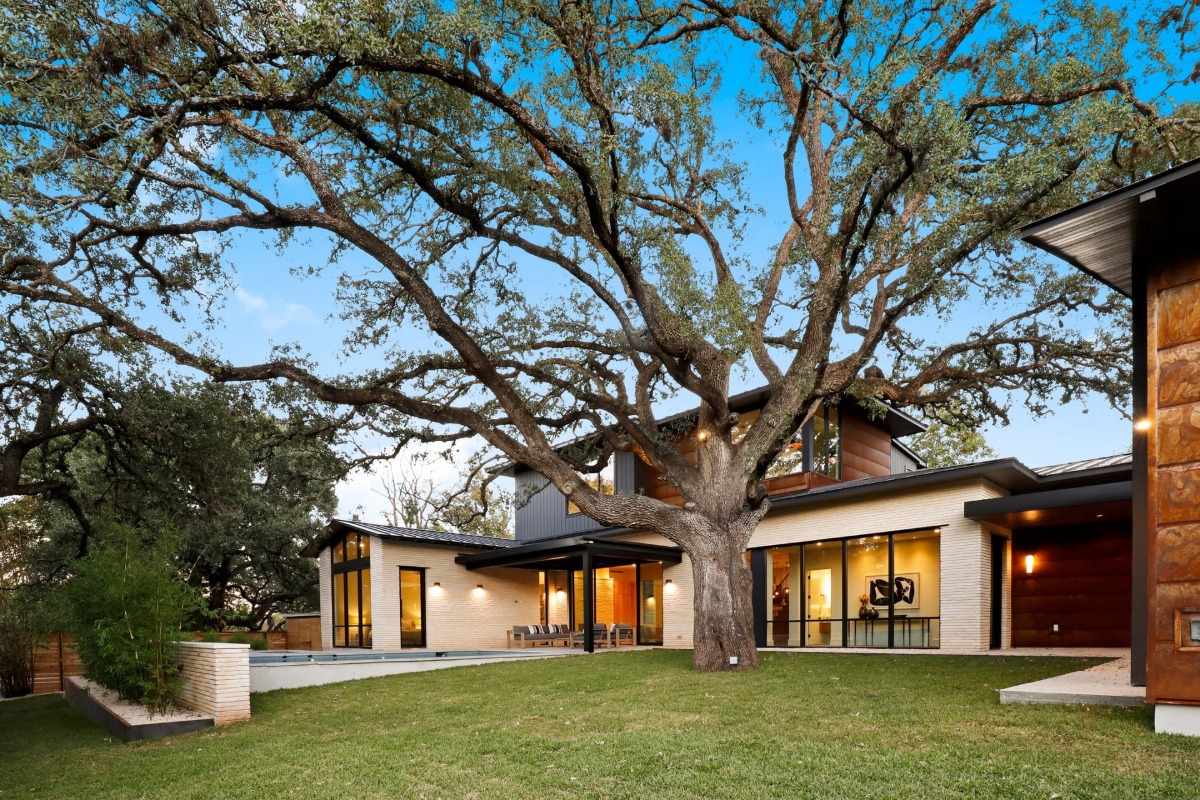In architecture and interior styling, contemporary living spaces are setting new benchmarks for innovation, sustainability, and comfort. As homeowners seek areas that align with their personal values and practical needs, designers are stepping up to deliver environments that are both functional and aesthetically striking. Let’s explore some of the vital trends shaping modern living.
1. Open-Plan Living Spaces
Open-plan designs have become a hallmark of contemporary home designs. By removing walls between the kitchen, dining, and living areas, these layouts create a seamless flow and make spaces feel larger, brighter, and more inviting. Open layouts also encourage family interaction, foster communication, and are ideal for entertaining guests in a cohesive environment.
To ensure functionality, these spaces are often divided visually using elements like furniture, rugs, lighting, or accent walls rather than physical partitions. Incorporating strategic storage solutions and zoning techniques further enhances practicality. The result is a home that feels unified yet purposeful, offering the best of both worlds—openness, organisation, and modern appeal.
2. Sustainable and Eco-Friendly Designs
Sustainability is no longer an afterthought—it’s a priority in contemporary design. Energy efficiency, water conservation, and the use of sustainable materials are all gaining traction. Features like solar panels, energy-efficient windows, and rainwater harvesting systems are becoming standard in many new builds. Additionally, incorporating natural materials such as reclaimed wood, bamboo, or stone not only reduces environmental impact but also adds warmth and texture to interiors. Designers are leaning toward biophilic design principles, bringing nature indoors with green walls, potted plants, and ample natural light.
3. Multipurpose Spaces
Modern homes are adapting to the diverse lifestyles of their occupants by offering versatile spaces that serve multiple functions. Home offices are no longer a luxury—they’ve become a necessity in the age of remote work. Similarly, areas that double as playrooms, workout studios, or hobby corners are being thoughtfully integrated into designs, reflecting the need for homes to adapt to changing routines and preferences. To achieve this flexibility, designers are using movable partitions, fold-away furniture, and built-in storage solutions. These additions maximise the utility of every square meter without compromising the home’s style, creating spaces that are both functional and visually appealing for various uses.
4. Minimalist Aesthetics with a Personal Touch
Minimalism continues to inspire modern homes, but it has evolved to allow for more personal expression. Clean lines, uncluttered spaces, and neutral colour palettes remain central to the trend. However, homeowners are increasingly incorporating bold accents, statement furniture, and unique artwork to reflect their individuality and create a more dynamic environment. This blend of minimalism and personalisation creates spaces that are both serene and vibrant. The goal is to maintain a sense of calm while celebrating the homeowner’s personality through curated decor, meaningful design choices, and carefully selected textures or patterns that add depth and character without overwhelming the simplicity of the space.
5. Seamless Indoor-Outdoor Integration
The connection between indoor and outdoor spaces has become a defining feature of current design trends. Large sliding glass doors, outdoor kitchens, and alfresco dining areas blur the boundaries between the interior and the surrounding environment, creating a harmonious flow between the two. Homes are being designed to make outdoor spaces feel like natural extensions of indoor living areas, with thoughtful additions such as cozy seating, weather-resistant materials, and integrated lighting for evening use. Whether it’s a patio, a balcony, or a lush garden, these areas are optimised for comfort, functionality, and year-round usability. This trend not only enhances the home’s aesthetic appeal but also improves the occupants’ overall well-being by fostering a deeper connection with nature.
6. Thoughtful Floor Plans Modified to Modern Needs
The layout of a home plays a vital role in ensuring functionality and comfort for its occupants. Designers are now focusing on floor plans that meet the evolving needs of families, including private retreats, guest suites, flexible workspaces, and areas for multigenerational living. This growing demand for adaptable designs ensures every room has a clear purpose while offering flexibility. Efficient zoning and features like sliding walls or convertible furniture allow homes to evolve with changing needs, thus balancing practicality and comfort seamlessly.
7. Smart Technology Integration
Smart technology is transforming modern homes, making them more efficient and convenient. Automated lighting, app-controlled security, smart appliances, and voice-activated assistants are now common features. These innovations enhance functionality while allowing homeowners to personalise their spaces, ensuring homes are future-ready and seamlessly blending technology with everyday living.
Modern home designs are a celebration of innovation, functionality, and style. They embrace open spaces, eco-conscious practices, and seamless connections between the indoors and outdoors. As sustainability and personalisation take centre stage, homes are transforming into spaces that truly reflect the unique needs and values of their inhabitants. By staying in tune with these trends, homeowners can create living spaces that are not only beautiful but also aligned with contemporary lifestyles. Whether you’re building from scratch or updating an existing property, modern design principles offer endless possibilities for crafting a home that feels truly timeless.
